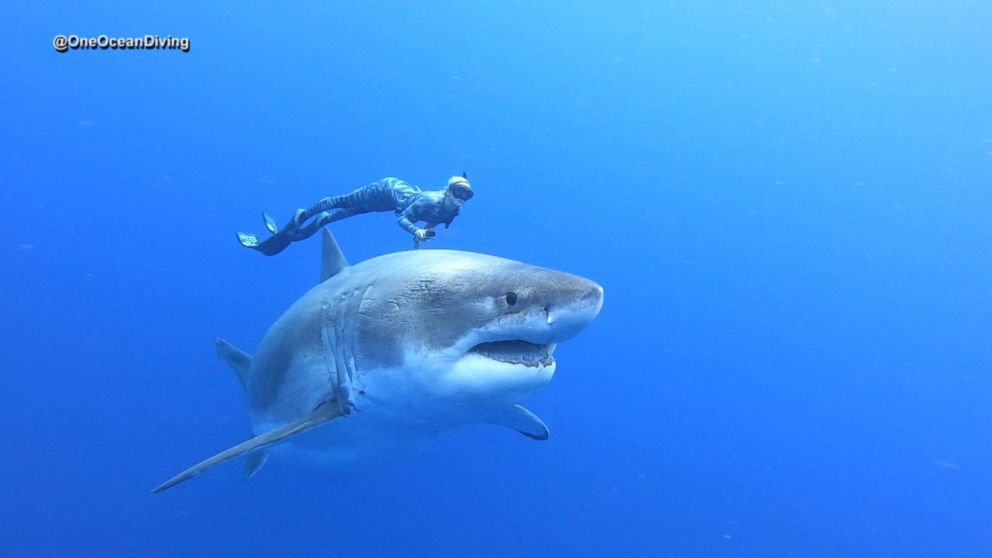

- #SHARKFEST DEEP BLUE SHARK PICTURES WITH DIVERS HOW TO#
- #SHARKFEST DEEP BLUE SHARK PICTURES WITH DIVERS LICENSE#
- #SHARKFEST DEEP BLUE SHARK PICTURES WITH DIVERS PROFESSIONAL#
- #SHARKFEST DEEP BLUE SHARK PICTURES WITH DIVERS TV#
Having the community connected to conservation is when you have success.”Īfter learning about sharks at aquariums, in classrooms, or on television, some children become avid ambassadors of sharks, enthusiastically reciting factoids and advocating for their protection.

They’re going to work in tourism, and they’re going to vote. “These kids are going to grow up and maintain the shark sanctuary. “We want local students to get out and see why tourists travel, why film crews come, why scientists come from all over the world,” says Morris. She had noticed a disconnect between tourists coming to the Bahamas-known as the shark-diving capital of the world-and residents, who stayed out of the water due to a culturally ingrained fear of sharks. “There’s so much misinformation out there about sharks,” says Morris, who started Sharks 4 Kids, an educational program in Bimini, in 2012. When surveying 11- and 12-year-old students in Hong Kong, researchers found that they favoured shark conservation when they were educated about their ecological significance in marine life and corrected about their misconceptions. That connection and education are key to continuing conservation efforts, according to a study published in PLOS One, a peer-reviewed, open-access scientific journal by the Public Library of Science.
#SHARKFEST DEEP BLUE SHARK PICTURES WITH DIVERS HOW TO#
(Learn how to help kids get over their fear of sharks.) It gives them a connection to sharks which will stay with them their whole lives.” “When kids see sharks behaving very differently than what they’ve been told their whole life, that’s the ‘aha’ moment. “If we have the opportunity to take kids out and see a shark in the wild, they’ll see them in a different light,” says marine biologist Jillian Morris. Here’s how responsible marine tourism can both inspire kids and help with conservation.
#SHARKFEST DEEP BLUE SHARK PICTURES WITH DIVERS PROFESSIONAL#
Once reserved for professional divers and marine biologists, getting close to wild sharks-safely-is becoming an activity for the whole family. Enthusiasts can snorkel or scuba dive with them witness their feeding habits or encounter great white sharks while submerged in an underwater cage. Shark tourism is a thriving, multi-million-dollar industry.

People are wild about sharks, and for some, that interest has inspired efforts to seek up-close-and-personal experiences. Millions tune in to watch a great white shark leap out of the ocean to catch its prey midair or see a shiver of silky sharks surround scuba divers.
#SHARKFEST DEEP BLUE SHARK PICTURES WITH DIVERS TV#
Until 2020, she was a National Geographic Explorer running a shark research project partially funded by the National Geographic Society in Singapore.Įach summer, sharks splash into our TV screens via programming like National Geographic’s SharkFest. on shark and ray fisheries and biology in Southeast Asia.
#SHARKFEST DEEP BLUE SHARK PICTURES WITH DIVERS LICENSE#
I just became curious.”Ĭlark-Shen got her diving license at age 16, and she is currently working on her Ph.D. From that moment, I knew I wanted to work with sharks,” she says. There was something so tranquil about it. “I watched hundreds of them swimming elegantly through the water. All that changed when, at age 14, she saw a documentary about sharks in Costa Rica. When her parents would take the family on snorkelling holidays in Malaysia, Clark-Shen would stay in the shallow sandy areas. I had a big imagination and would psych myself out thinking about predators-sharks and crocodiles-coming to get me.” I was scared of the dark murky areas that I couldn’t see. “But I was never that interested in marine life. “From a very young age, I’ve been obsessed with animals,” she says. Marine biologist and conservationist Naomi Clark-Shen used to be petrified of the ocean.


 0 kommentar(er)
0 kommentar(er)
